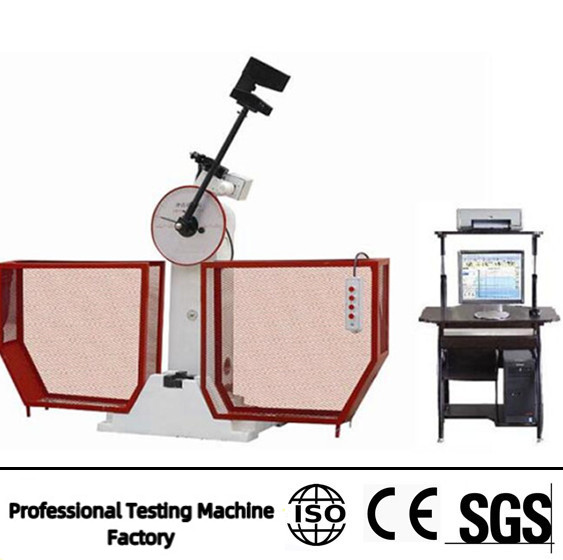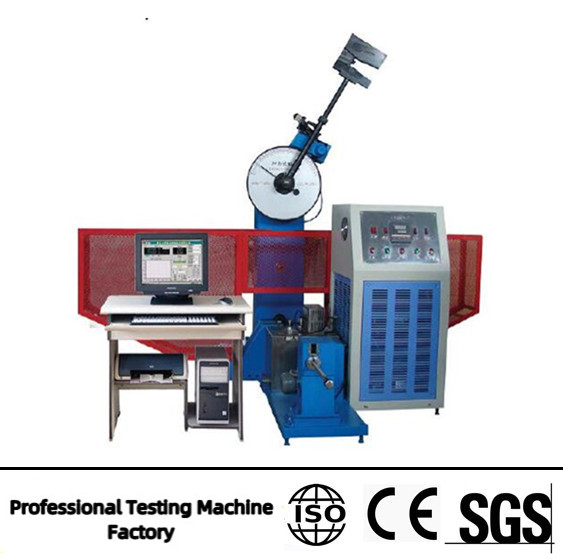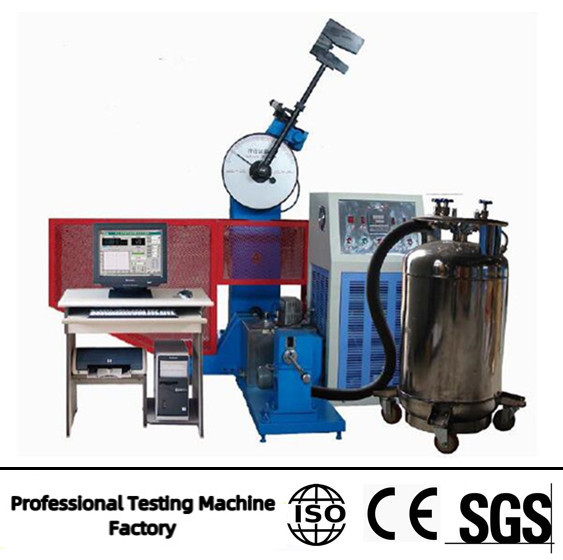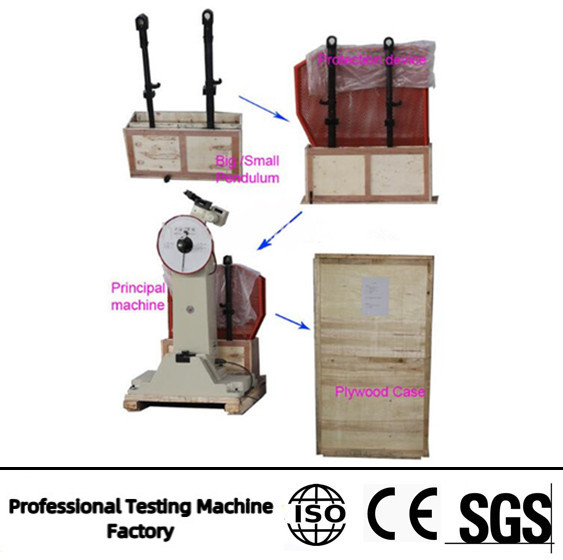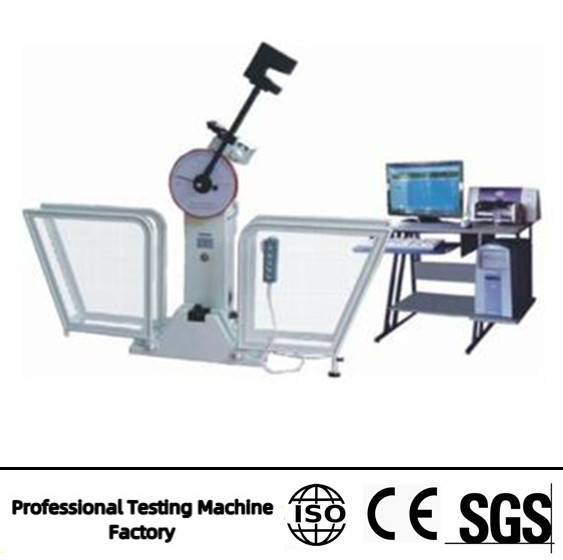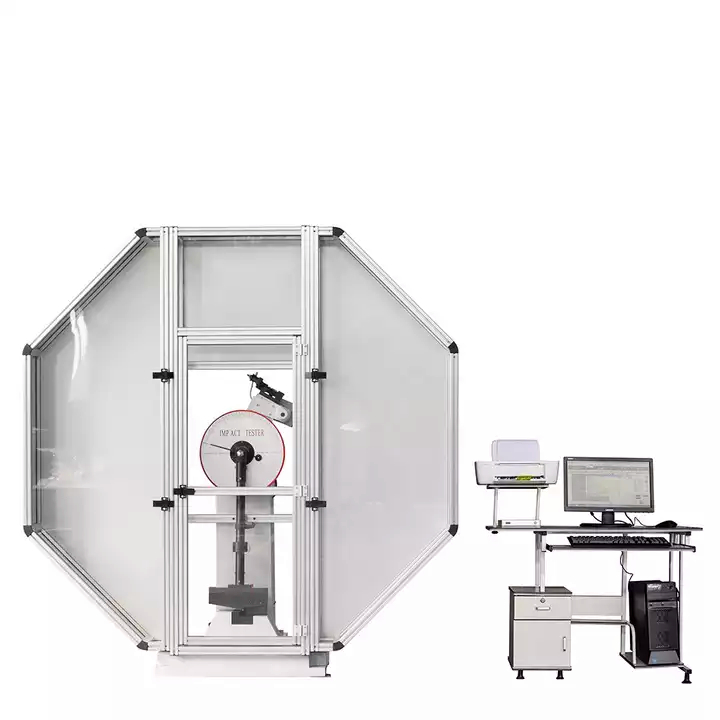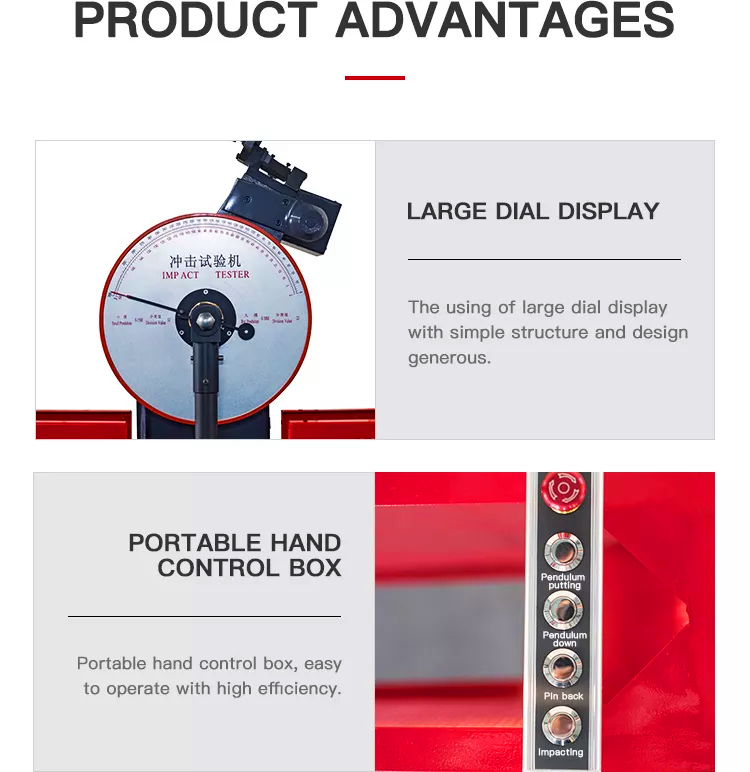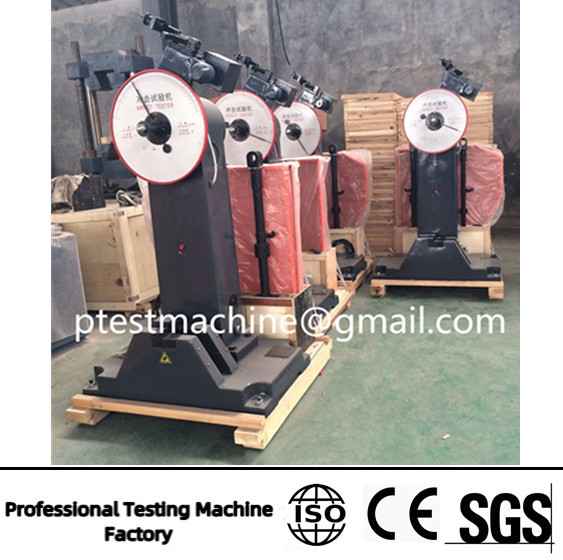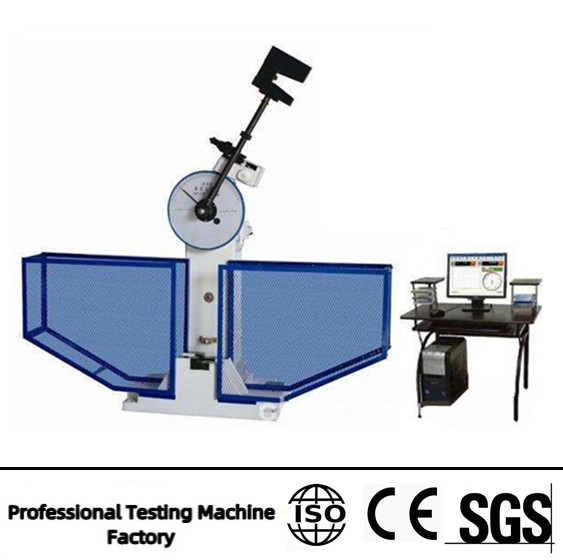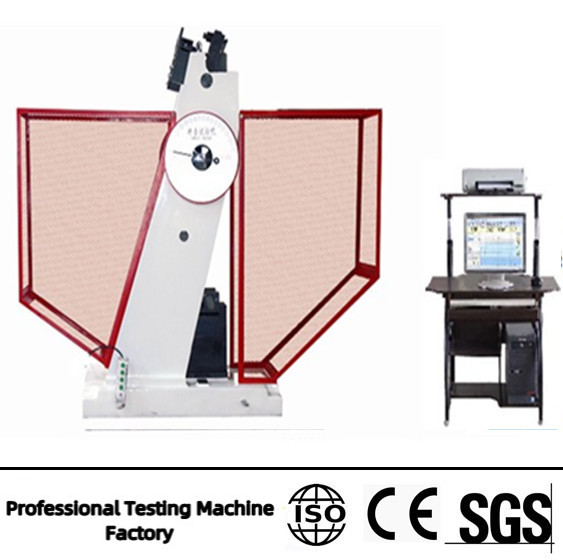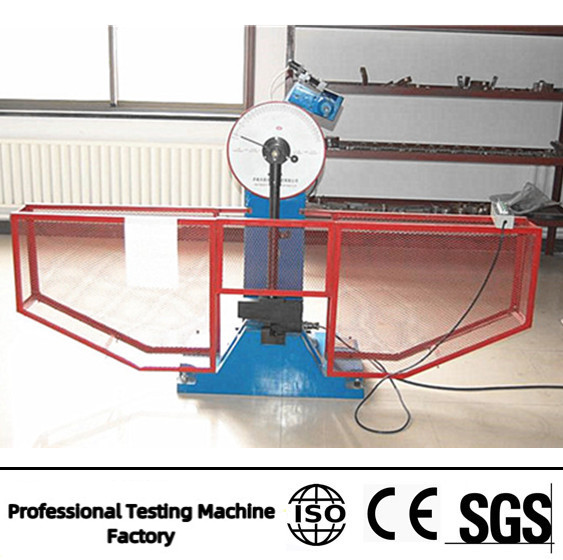JBDW-300 Ordinateur Écran Pendulum impact machine d'essai avec une chambre super basse température
1. Introduction générale
The JBDW – 300 Computer Screen Display Pendulum Impact Testing Machine with Super Low Temperature Chamber is a specialized piece of equipment used to test the impact resistance of materials under super – low temperature conditions. It is commonly employed in industries such as electronics, aérospatial, and materials science to evaluate the performance of computer screens and other materials in harsh environments.
2. Principales caractéristiques
une. Computer Screen Display
- It is equipped with a computer – controlled screen that provides real – time display of test data, including impact energy, impact force, and deformation. This allows operators to monitor the test process accurately and obtain precise results.
- The display also enables easy parameter setting, such as test speed, pendulum angle, and temperature control.
b. Super Low Temperature Chamber
- The super low temperature chamber can reach extremely low temperatures, which simulates the actual working conditions of materials in cold environments. This is crucial for testing the impact resistance of materials at low temperatures, as the mechanical properties of materials often change significantly with temperature.
- The chamber has good thermal insulation performance to ensure stable temperature control during the test.
c. Pendulum Impact Testing
- The pendulum impact testing mechanism provides a standardized and repeatable way to apply impact force to the test specimen. The machine can accurately measure the energy absorbed by the specimen during the impact, which is an important indicator of its impact resistance.
- Different pendulum weights can be selected according to the test requirements to meet the needs of various specimens.
3. Spécifications techniques
une. Temperature Range
- The super low temperature chamber typically has a temperature range from – 40°C to – 196° C, allowing for a wide range of low – temperature tests.
b. Énergie d'impact
- The JBDW – 300 model can provide an impact energy range suitable for testing different types of specimens, usually from a few joules to hundreds of joules.
c. Précision de test
- It has high – precision sensors and measurement systems, ensuring accurate measurement of impact energy and other test parameters. The measurement error is generally within a small range, such as ± 1%.
4. Applications
une. Electronics Industry
- Used to test the impact resistance of computer screens, mobile phone displays, and other electronic components at low temperatures. This helps manufacturers ensure the quality and reliability of their products in cold environments.
b. Aerospace Industry
- Test materials used in aircraft and spacecraft components to evaluate their performance under extreme cold conditions during flight.
c. Materials Research
- Assist researchers in studying the impact behavior of new materials at low temperatures, which is beneficial for the development of high – performance materials.
Application:
Ce genre de machine est utilisé pour déterminer la résistance aux chocs des matériaux métalliques sous charge dynamique. Le pendule de la machine peut être augmentée ou libéré automatiquement. Il est conçu selon la norme nationale GB / T3808-1995 « Charpy Méthode d'essai pour les métaux » et la norme ISO.
Il peut aussi être conforme à la norme ASTM E23 comme demande spéciale du client. Il a les caractéristiques d'une utilisation facile, haute efficacité, sûr et fiable. Le système informatique peut faire du traitement de données et d'obtenir le rapport d'essai. Dans le système de refroidissement de la température super bas, il peut vérifier les performances de l'impact des matériaux. La machine est particulièrement appropriée pour le laboratoire, l'industrie de la métallurgie, la production de machines, aciérie et d'autres domaines.
Caractéristiques:
| Caractéristiques |
JBDW 300 |
JBDW 500 |
| Énergie d'impact (J) |
150, 300 |
250, 500 |
| Vitesse d'impact (Mme) |
5.2 |
5.4 |
| angle élevé |
150º |
| durée standard (mm) |
40 |
| angle rond de mâchoires (mm) |
R1-1.5 |
| angle rond de bord frappant (mm) |
R2-2.5 |
| Taille de l'échantillon (mm) |
10 X 10 X 55 |
| Source de courant |
3PHS, 380V, 50Hz ou 220 V, 60Hz |
| Dimensions (mm) |
1600 X 850 X 1530 |
1600 X 850 X 1530 |
| Poids net (kg) |
880 |
980 |
| Afficher |
Écran d'ordinateur |
| Gamme basse température |
-80— -190° C (L'azote liquide) |


















